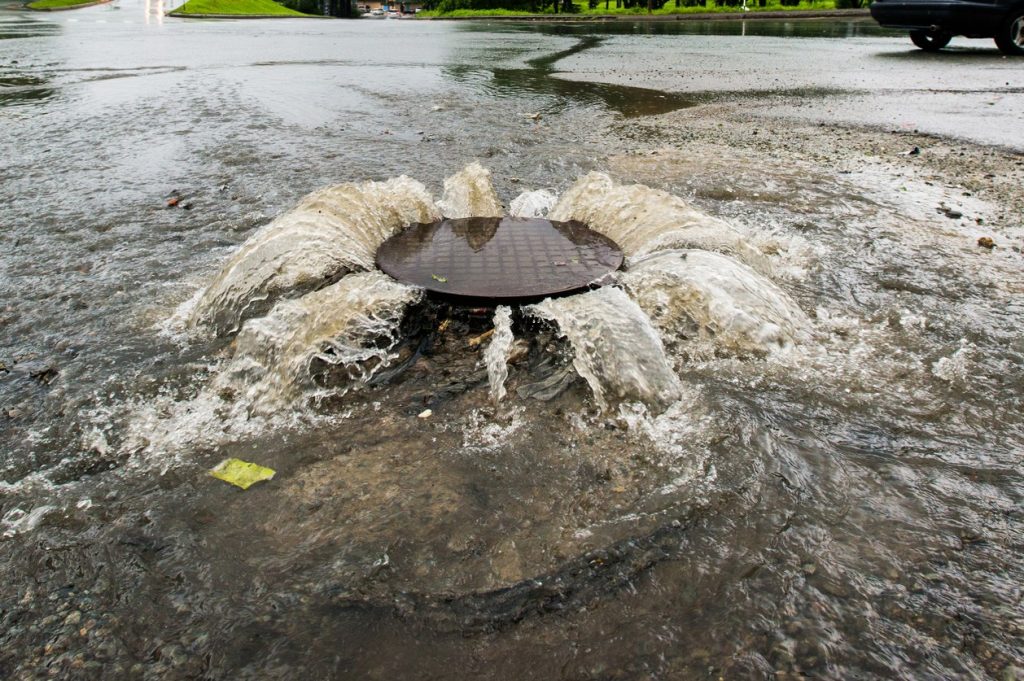Municipalities across the United States, including many here in New York and Connecticut, are currently in violation of the Clean Water Act.
In this blog post, Madeline Collins, Esq., a Save the Sound legal intern and Vermont Law LLM student, examines the flaws in the EPA’s recent guidance for clean water enforcement, and what should be done to draft guidance that better protects communities’ health and advances equity.
In its proposed 2022 Financial Capability Assessment Guidance, the Environmental Protection Agency provides a rubric for determining appropriate timelines as part of enforcement actions to bring municipalities into compliance with the critical protections under the CWA. That Guidance is based on a premise we agree with: compliance with critical CWA obligations that protect the environment and the public’s health will require expensive infrastructure upgrades that municipalities often have difficulties funding.
However, as written, the FCA Guidance is also based on certain premises we do not agree with, specifically an overreliance on ratepayers as the primary funding source for CWA projects. The 2022 Guidance leaves low-income communities, the ones most impacted by historical CWA noncompliance, suffering from water pollution from municipal wastewater—including poorly treated sewage, combined sewer overflows, and sanitary sewer overflows—for unreasonable stretches of time because it looks too narrowly at funding options, focusing primarily on ratepayers.
Instead, the Guidance should offer solutions that do not increase the financial burden on lower-income ratepayers, that make the best use of available financial resources, and that ensure prompt CWA compliance.

The Guidance is particularly concerning because its proposed methods for calculating a community’s financial ability to pay higher rates fail to include a household-specific income-based rate structure. It is no secret that our region is home to some of the most significant wealth disparities in the nation. Some households in a community may be able to afford higher rates—others cannot. Despite this reality, the Guidance gives the illusion of looking out for low-income households by calculating a uniform rate increase based on the lowest-earning 20% of the population. However, these calculations are not based on individual household income. Not only will there be households in the bottom-earning 20% of the population that will not be able to afford a rate increase, but wealthier households will not bear an equitable burden of the increased costs. In other words, under this structure, low-income households would feel the effects of a rate increase far more intensely than wealthier households would, while some possible revenue is left on the table by undercharging those wealthier households. If a household-specific income-based rate structure were adopted, rate increases would be proportional to each household’s income, so that CWA compliance could be achieved in a fair and reasonable way.
But there’s another crucial question to consider: should ratepayers even be the primary source of funding for such massive, critical, and required infrastructure projects? The Guidance fails to recognize that ratepayers are not the only or even the most significant funding option available to municipalities. It does not—but should—require municipalities to exhaust all available financial alternatives before they can delay CWA compliance based upon low-income households’ financial capabilities. Instead, the Guidance merely suggests that municipalities use financial tools to increase total spending on compliance. This is not enough. Because of the severe impact that increasing rates would have on many residents and communities in the Long Island Sound region, municipalities should be required to exhaust every financial opportunity before turning to ratepayers. Doing so would allow all municipalities, regardless of their financial capability, to reach CWA compliance in an equitable way. As written, the Guidance would prolong environmental and public health issues in low-income communities, which is unacceptable.
The Guidance is further troubling because it allows for long period of noncompliance, sometimes 25 years or longer, even in cases where the project is resulting in catastrophic environmental harm. This prolongs the economic, environmental, and health issues that low-income residents historically have endured. Under certain circumstances, municipalities can ask for extensions of time to comply with their CWA obligations beyond their already lengthy compliance schedules. For example, the Metropolitan District Commission, serving the greater Hartford area of Connecticut, proposed a 29-year extension to its Combined Sewer Overflow Long Term Control Plan (LTCP), citing affordability; this plan addresses the discharge of raw sewage during large storm events, an issue that MDC has been working to address since 1991. MDC’s first LTCP, finalized in 2005, was scheduled to be completed by 2029, but the extension sought would push this date back all the way to 2058. The 2022 Guidance would allow for such a moving target—meanwhile millions of gallons of raw sewage combined with stormwater pour into local waterways each year. While the Guidance recommends that municipalities prioritize CWA compliance projects based on the urgency and severity of compliance issues, these considerations are merely suggested. A case-by-case evaluation of how long compliance has been neglected, the scale of the needed investment, the size of the environmental harm, and the resulting public health and environmental health risks, should be required when municipalities and EPA are proposing and evaluating CWA compliance schedules and extension requests.
The Guidance will directly impact Long Island Sound communities. Our region suffers from poorly maintained and outdated sewage infrastructure and, consequently, sewage pollution in the Sound and its tributaries. Many municipalities and water pollution control authorities have sought extensive delays to CWA compliance, extending this burden of pollution across generations. Specific examples of delays in CWA compliance in our region—particularly in the greater Hartford area and New York City—are discussed at length in our comments.
Save the Sound will continue to advocate for both needed infrastructure improvements and funding for them through water quality monitoring, watchdog initiatives, state budget advocacy, and, when appropriate, taking legal action. Affordability and clean water are not mutually exclusive objectives, as the 2022 FCA Guidance implies. Clean water and public health cannot and need not wait.
